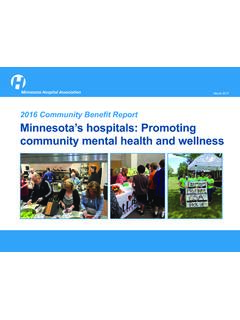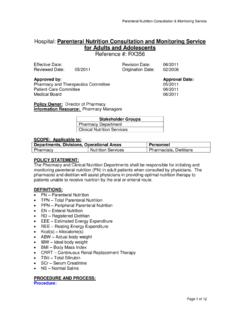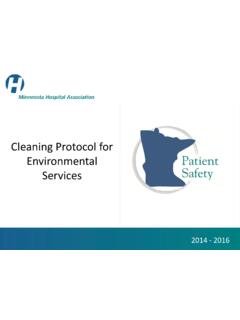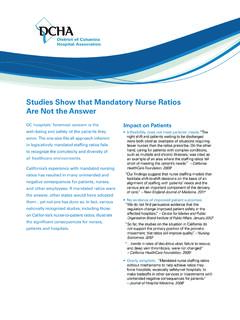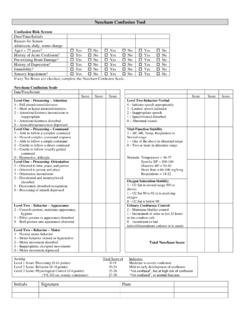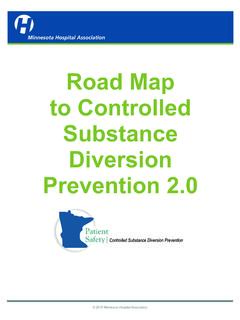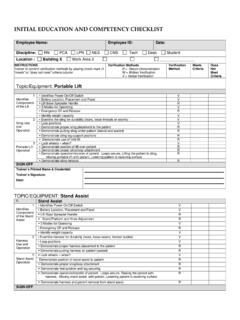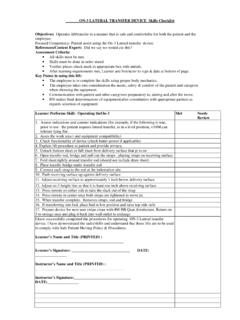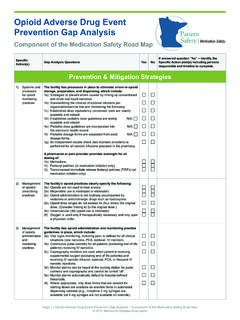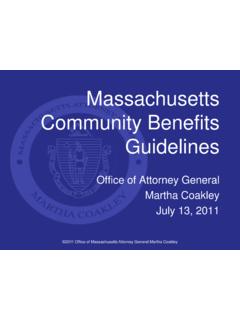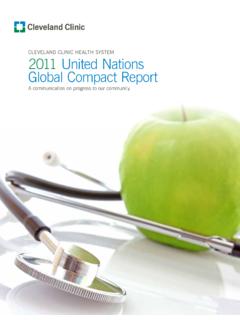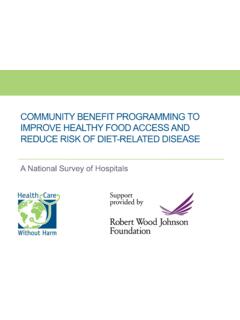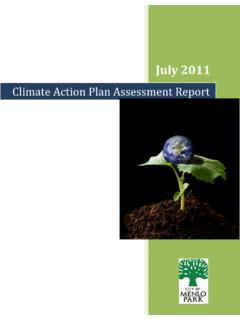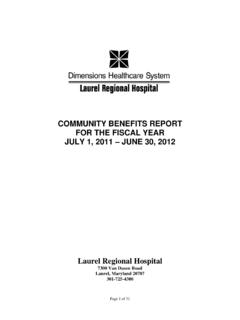Transcription of 2012 Community Benefit Report - MHA
1 2012 Community Benefit Report2012 Community Benefit Report Improving health in our communitiesMinnesota hospitals Community contributions total $ billion The 144 hospitals and health systems which are members of the Minnesota Hospital Association provide access to health care 24 hours a day, seven days a week. In addition to serving as the safety net, hospitals are an economic contributor to the Community . Many of our members are the largest employer in their communities, and our employees have a great stake in the Community they live and work in. Throughout the state, your local hospital is a partner in the health and well-being of the Community . Minnesota hospitals have a tradition of partnering with their communities to help meet the specific need of their communities.
2 In addition to caring for patients within the walls of the hospital, we know that health often happens outside the doctor s office. That s why this year, our Report shares some examples of how our hospitals and their employees are helping to improve the health of the people in their communities. According to a Report from the Robert Wood Johnson Foundation, approximately 26 percent of Minnesotans are obese, and by 2030 that number is projected to climb to percent. The Report concluded that by reducing the state s average body mass index by 5 percent, it could save $ billion in obesity-related disease rates and health care costs. Hospitals understand they play a critical role in helping reverse this trend and are working to promote healthier lifestyles through programs designed to get people to increase their physical activity and eat the right to address the health and wellness of communities are just one way in which hospitals Benefit their communities.
3 Each year, Minnesota s hospitals provide contributions in the form of medical research projects, physician training initiatives and programs to care for those who cannot pay. Minnesota s hospitals continued to aid their communities with compassion and commitment. This Report covers Community Benefit contributions made by Minnesota s hospitals in 2011 the most recent year for which data are available. Uncompensated care $ millionEvery day without fanfare, hospitals offer their care at no cost. In 2011, Minnesota hospitals provided $ million to patients who didn t have health insurance or the means to pay for their care. In the past 5 years, uncompensated care has increased 10 percent. in millions52051050049048047046045044030027 52502252001751501251007550250$462 m$476 m$477 m$496 m$509 mTrends in Uncompensated Care2007-201120072011201020092008 Services responding to specific Community needs $ millionHealth screenings, health education and health fairs, immunization clinics, subsidized health services and other Community outreach programs fall under this category, which totaled $ million in and workforce development $397 millionMinnesota s health care workforce will take care of new people who gain insurance as a result of the Affordable Care Act and an aging population.
4 In 2011, Minnesota hospitals spent $397 million to help train doctors, nurses and other highly skilled health care professionals to care for our $ millionIn 2011, Minnesota hospitals spent $ million on research to support the development of better medical treatments and to find cures for disease. Government underfunding $ billionWhen hospitals treat patients on Medicare or Medicaid, those government health care programs do not reimburse hospitals the full amount it costs the hospitals to provide the care. In 2011, such government underfunding to Minnesota hospitals exceeded $ billion, or percent of the hospitals operating hope the stories in this Report will inspire you to support local hospitals so they can provide the critical Community health care services to improve health status, access to care, and quality of life in our J.
5 MassaPresident and Chief Executive OfficerMinnesota Hospital AssociationTable of ContentsMinnesota hospitals Community contributions ..5 HealthEast Passport program helps adults stay active, provides social interaction to fight loneliness and depression ..6 Meeker Memorial Hospital helps healthy eating take root ..8 Lakeview Health helps kids PowerUp for a healthy lifestyle ..10 Helping patients take control of their own health ..12 Region 1 Community contributions ..14 Region 2 Community contributions ..15 Region 3 Community contributions ..16 Region 4 Community contributions ..17 Region 5 Community contributions ..18 Region 6 Community contributions ..19 Glossary ..20 Charity care ..$ 227,723,414 Costs in excess of Medicaid payments.
6 $ 627,466,253 Medicaid surcharge ..$ 133,749,413 MinnesotaCare tax ..$ 199,153,791 Other costs in excess of public program payments ..$ 15,755,145 Community services and Benefit $ 39,919,628 Subsidized health services ..$ 314,844,771 Education and workforce development ..$ 397,205,270 Research ..$ 515,561,298 Cash and in-kind donations ..$ 18,499,382 Total cost of Community benefits (as defined by the IRS) ..$ 2,489,878,365 Percent of total operating expenses .. building ..$ 8,556,518 Costs in excess of Medicare payments ..$ 855,056,126 Other care provided without compensation (bad debt) ..$ 281,874,518 Total value of Community contributions ..$ 3,635,365,527 Minnesota hospitals 2011 Community contributionsMinnesota Hospital Association 2012 Community Benefit Report | 5 HealthEast Passport program helps adults stay active, provides social interaction to fight loneliness and depressionHealthEast Care System, St.
7 PaulThe HealthEast Care System Passport program is a free membership program for people age 50 and over. Started in 1989, the program aims to help keep adults active, encourage socialization, establish new friendships, become engaged in the Community and become more knowledgeable on how to manage their health. Currently, Passport has more than 34,000 members primarily in the East Metro Community with dedicated accomplishes these goals by offering social opportunities, educational seminars, day trips, overnight trips, opportunities to meet other members and volunteer. benefits include health education, screenings, defensive driving classes, social events, excursions into the Community , City Passport center, Advisor newsletter, and volunteer opportunities such as making newborn hats for hospitals, memory boxes, or afghans for the emergency department.
8 By focusing on the psychological, social and spiritual well-being of people age 50 and older, the Passport program minimizes loneliness and depression, which have a wide range of negative effects on both physical and mental health, said program manager Renee Skoglund. Some of the health risks associated with loneliness include depression, suicide, cardiovascular disease, stroke, increased stress levels, substance abuse and memory Hospital Association 2012 Community Benefit Report | 6 By focusing on the psychological, social and spiritual well-being of people age 50 and older, the Passport program minimizes loneliness and depression, which has a wide range of negative effects on both physical and mental health.
9 Renee Skoglund, Passport program managerBeginning in 2005, a partnership between HealthEast, the city of Saint Paul, and the leasing company (for the space) was formed. City Passport-Downtown is a nationally recognized site that records more than 16,000 visits every year, and has hosted Gov. Dayton s town hall forum. City Passport is a Community center that provides a place to socialize, learn and get involved in the Community for people age 50 and older. The center includes a classroom, private conference room, computer lab and a social area with periodicals and a large television. The Passport Program is proud to have City Passport programming also held in five additional cities in the East Metro area without any additional costs to the cities or HealthEast.
10 One of the most successful elements of the Passport program is the Passport Nurse. While based at the City Passport location in downtown St. Paul, she also provides screenings at other Community centers. This concept has proven to be a safe, convenient place for members to receive health screenings and health conversations. Accomplishments included 622 blood pressures taken, 185 blood sugars measured, 125 health conversations held, and six emergency department visits avoided. The annual value of the Passport program is approximately $500,000. Some of the programs are offered at no cost, or at a reduced rate, to ensure accessibility for members of all socio-economic learn more, visit Hospital Association 2012 Community Benefit Report | 7 Meeker Memorial Hospital helps healthy eating take rootMeeker Memorial Hospital, LitchfieldAs part of its Statewide Health Improvement Program (SHIP) participation, the Meeker Memorial Wellness team identified a need to improve the nutrition of meals and access to fresh vegetables served at its Prairie Winds Caf.
